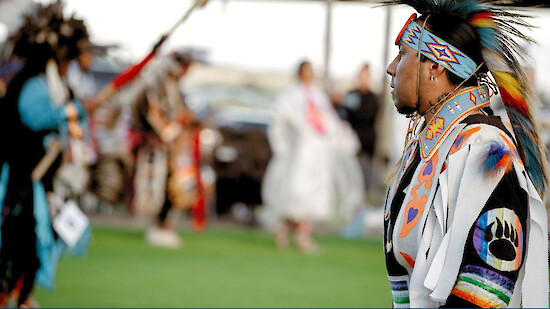
Taking Time to Listen and Understand: Calibre’s Approach to Indigenous Relations
Engaging respectfully with Indigenous communities is more than just policy at Calibre – it’s the way we work every day.
This is true in all phases of a Calibre Mining project, whether we’re ensuring the right to Free, Prior and Informed Consent during initial negotiations, conducting proactive consultation in advance of development or maintaining transparent two-way communication as we move into production.
We also take time to adjust our approach to the unique needs of each community – as a matter of respect and diligence. As Calibre President and Chief Executive Officer Darren Hall puts it: “The biggest risk would be assuming that what we do in one jurisdiction can work somewhere else. The only thing that is truly transportable, jurisdiction to jurisdiction, is taking the time to listen and understand.”
Read on to learn more about how Calibre interacts with Indigenous communities in our three project regions. Plus, hear from local Indigenous residents, in their own words, about their experiences working with Calibre.
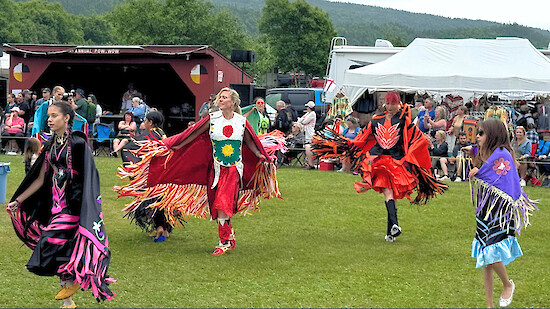
The Miawpukek and Qalipu First Nations: Valentine Gold Mine, Newfoundland & Labrador, Canada
Our closest Indigenous neighbours in Newfoundland & Labrador, near the Valentine Gold Mine, are the Miawpukek and Qalipu First Nations. Both are part of the Mi’kmaq Nation, whose historic territory extends from Maine to Quebec, and through the Maritimes and the island of Newfoundland.
The Miawpukek Mi’kamawey Mawi’omi reserve, home to around 3,000 members, sits at the mouth of the Conne River on the south coast of Newfoundland, approximately 110 km from the Valentine Gold Mine site. The Qalipu First Nation is geographically dispersed, with around 20,000 members in 67 communities – the closest communities being Buchans and Millertown, around 49 and 60 km, respectively, from the Valentine Gold Mine site.
The Valentine Gold Mine team began engaging with both groups in 2019. This includes formal consultation as part of the project’s environmental assessment, along with land and resource use studies.
“Calibre has made it a top priority to build and maintain trusting, respectful and strong relationships with Indigenous communities, working closely with them from the early stages of exploration to the current development phase, ensuring that their concerns are addressed, and environmental protection and cultural preservation are top priorities,” says Charlene Combdon, Exploits Ward Councillor for Qalipu First Nation.
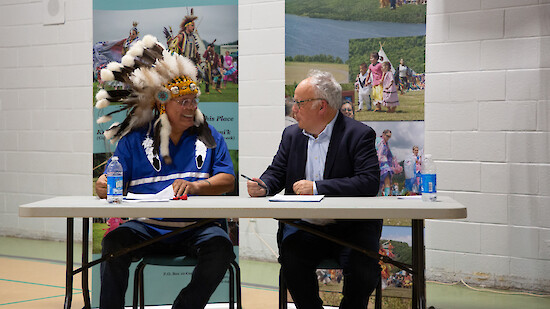
Calibre has also signed landmark socio-economic agreements with both groups – Qalipu in 2021 and Miawpukek in 2023 – codifying commitments ranging from environmental stewardship to funding for scholarships and cultural events. And, more recently, the Valentine team has been working to increase Indigenous employment through recruitment and contracts.
These initiatives are a first of their kind for Newfoundland and “a great start to engagement and relationship-building with Indigenous people,” says Miawpukek First Nation member Angelina Francis, who served as Community Liaison Officer to Calibre.
Other recent activities are geared to strengthening bonds of trust and understanding. For instance, last year, the Valentine team hosted representatives from both First Nations at the mine for a behind-the-scenes tour. “Both groups were reassured by what the Valentine Gold Mine team was doing to protect the environment. They knew it on paper, but to see the site really brought it home for them,” says Mary Hatherly, Manager of Stakeholder and Indigenous Relations for the Valentine Gold Mine.
Valentine’s team has also commissioned cultural training materials developed by Qalipu First Nation for its employees. Additionally, the Valentine team observes days of special significance for Indigenous peoples, including National Day for Truth and Reconciliation, National Indigenous Peoples Day and Red Dress Day, Mary notes. “We are currently engaged in discussions with the Qalipu and Miawpukek First Nations to explore ways to encourage our employees to become aware of and respect, Indigenous history, culture and identity.”
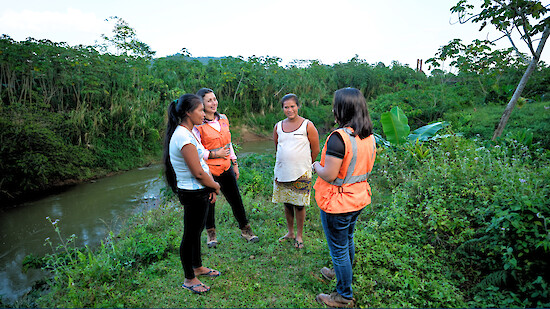
The Mayangna Sauni Arungka and Miskitu: Borosi Mine, Nicaragua
In Nicaragua, the closest Indigenous groups to our operations are the Mayangna Sauni Arungka and Tuahka, 10.5 km from our Borosi Mine, and the Miskitu communities of the Prinzu Auhya Un, Prinzu Awala, Tasba Pri and Twi Waupasa Territories.
Between 2020 and 2021, Calibre formally consulted 66 Indigenous communities in Nicaragua, with more than 1,000 people participating. These consultations centred around potential exploration projects, and providing assurance that Calibre would thoroughly consult with Indigenous communities prior to starting any work near or within their territories.
While Calibre doesn’t currently extract ore in any of Nicaragua’s Indigenous territories, the Company’s Community Relations team still meets regularly with representatives from Indigenous communities.
“Calibre is a company that has always respected property and the laws,” says Ignacio Francis, a Miskito resident of the Bambana Community.
This type of open, ad hoc communication is key to maintaining positive relations with Indigenous groups in Nicaragua, says Angélica Calderon, Calibre’s Nicaragua Manager of Community Relations: “They know they can always come to us to discuss any concerns they may have.”
Calibre’s presence has brought other welcome benefits to Indigenous communities, as well. “When Calibre came to work in my community, they supported education by improving the school, and also supported the church,” says Sáenz Robins Zacarias, a local primary school teacher and member of the Mayangna Ibanwas Community. “Many young people got jobs, allowing them to earn an income to improve their families’ lives.”
Calibre continues to seek ways to strengthen positive relations. One example is a recent cultural training initiative, where 122 employees gained a greater understanding of the history, customs and governance traditions of the Miskitu and Mayangna communities. In coordination with the groups’ leaders, Calibre’s team also prepared and distributed a booklet detailing the rich culture and heritage of both groups.
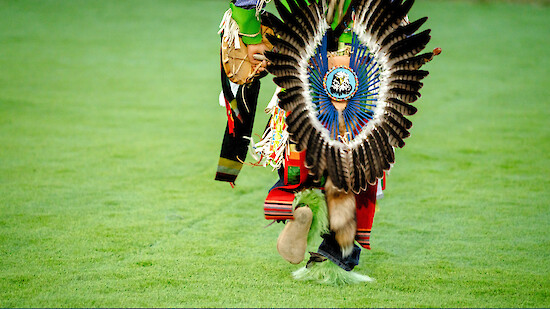
The Duckwater Shoshone: Pan Mine, Nevada, USA
Calibre’s Pan Mine is located in east-central Nevada, approximately 28 km southeast of the town of Eureka. The closest Indigenous group is the Duckwater Shoshone Tribe of Nevada, – whose reservation sits around 30 km from the mine site. Farther afield is the Ely Shoshone Tribe.
Both groups were formally consulted in the mine’s early stages as part of the Environmental Impact Statement process – and also recently, for an Environmental Assessment on golden eagles nesting near the mine site; a species with local cultural significance.
But the Pan Mine team interacts most often with its nearest neighbour, the Duckwater Shoshone. The Duckwater Shoshone tribe is governed by a five-member Tribal Council. Its facilities include an elementary school, where Calibre visited recently to give a presentation on geology to the students.
“That was really special for our team, just to go and meet the students and have fun talking about mining geology,” says Dan Ferriter, Calibre Vice President of Environmental Affairs- U.S.
The Calibre team was also incredibly honoured to participate in the 2023 Duckwater Shoshone Annual Festival and Powwow. It was a powerful experience celebrating local cultural heritage, bringing together many different tribes from across the western U.S. – and a wonderful opportunity to strengthen the bonds between Calibre and the Indigenous communities around the mine.
Interested in learning more about Calibre’s work with Indigenous peoples and our approach to community relations? Take a look at our 2023 Sustainability Report